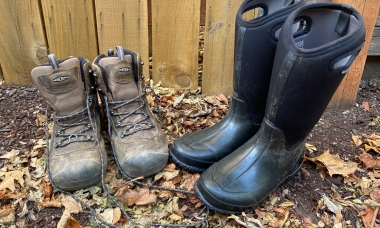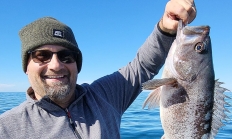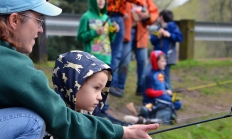
Search myodfw.com
CENTRAL WILDLIFE VIEWING December 4, 2025 Crook County Fall ungulate migration will soon be upon us. You can find mule deer transitioning from high elevation summer feeding areas to the lower elevation sagebrush and agricultural areas. There are red-tailed, rough-legged and ferruginous hawks, northern harriers, American kestrels, prairie falcons and golden eagles throughout Crook County and they're usually associated more closely with open/agricultural areas. Bald eagles and ospreys, on the other hand, are more closely associated with water bodies. Look for northern goshawks throughout the Ochoco National Forest, and for ducks and geese in rivers and lakes. Prineville Reservoir Wildlife
The information provided here is intended to help you get an idea of your odds of drawing a reservation in the Eastside and Oak Island hunt areas. First off, the number of permits available in each hunt unit does change throughout the season. See the NUMBER OF RESERVATIONS AVAILABLE FOR EASTSIDE AND OAK ISLAND UNITS link to view the number of permits that are available for each unit and hunt period.



Features: Greater sage-grouse are a large grouse species. They are mottled gray-brown with black undersides. Males have black on the head and throat, while females have white behind their eyes. Habitat: Sage-grouse were originally found through much of the sagebrush dominated areas of eastern Oregon, but were eliminated from large areas by the mid 1900s through conversion of land for agricultural purposes. There has been little change in sage-grouse range, however since the 1950s. They live exclusively in sagebrush steppe habitat. During dry years, they may be concentrated in the vicinity of water sources. Technique: Due to greater sage-grouse fluctuating

Establishment of the Bridge Creek Wildlife Area initially started in 1961 when a parcel of land was purchased from the Frank Hilbert estate. After the initial purchase, several private holdings were acquired to consolidate the land under department ownership. The last parcel was purchased from the Colvin Cattle Company in 1975. The primary purpose of the wildlife area is to maintain and protect a key historic winter range for Rocky Mountain elk ( Cervus elaphus nelsoni).

Glen Otto Park - 1102 E Historic Columbia River Hwy. Troutdale, 97060



It’s hard to enjoy a day of hunting if your feet are cramped, wet or cold. Many turkey hunters in Oregon have at least two different pairs of boots to meet the variety of conditions they might encounter while hunting. Rubber boot for cold, wet conditions Rubber knee boots are a good choice when conditions are cold and wet, and/or when you’ll be sitting for hours in a ground blind. Many boots are insulated to help keep your feet warm. If you’re looking at uninsulated boots, buy them ½ to one size larger than you normally wear. This will give




